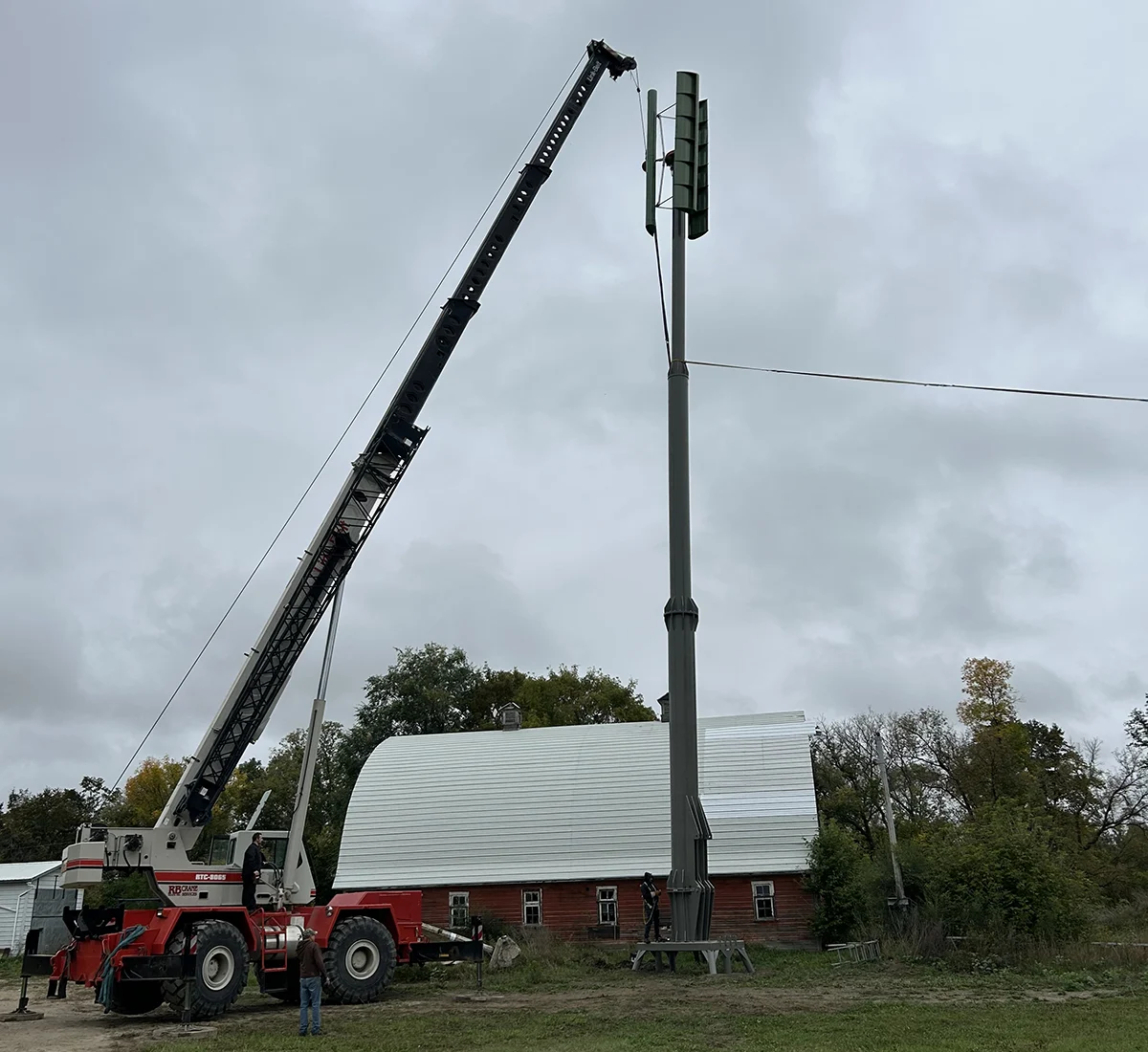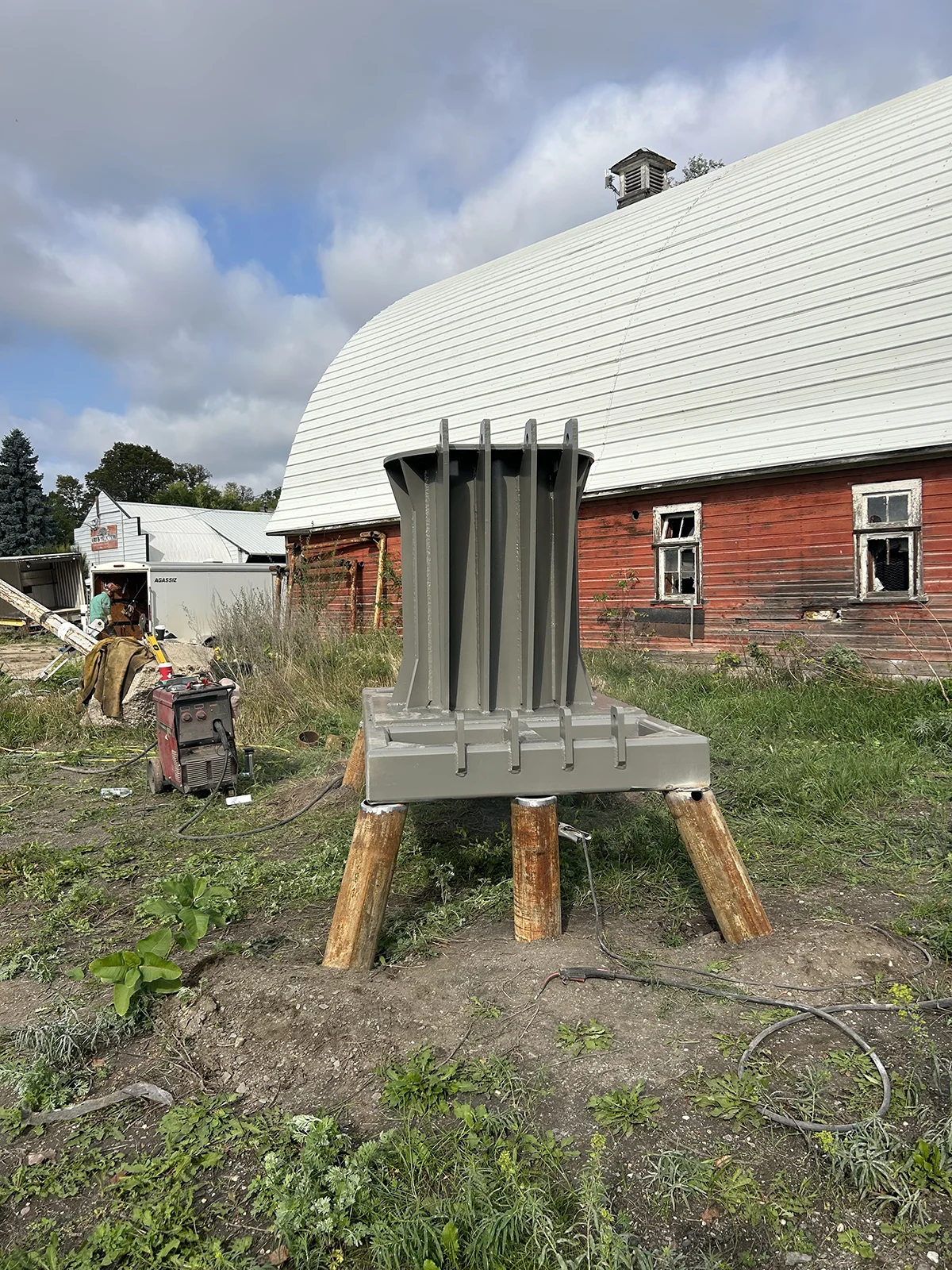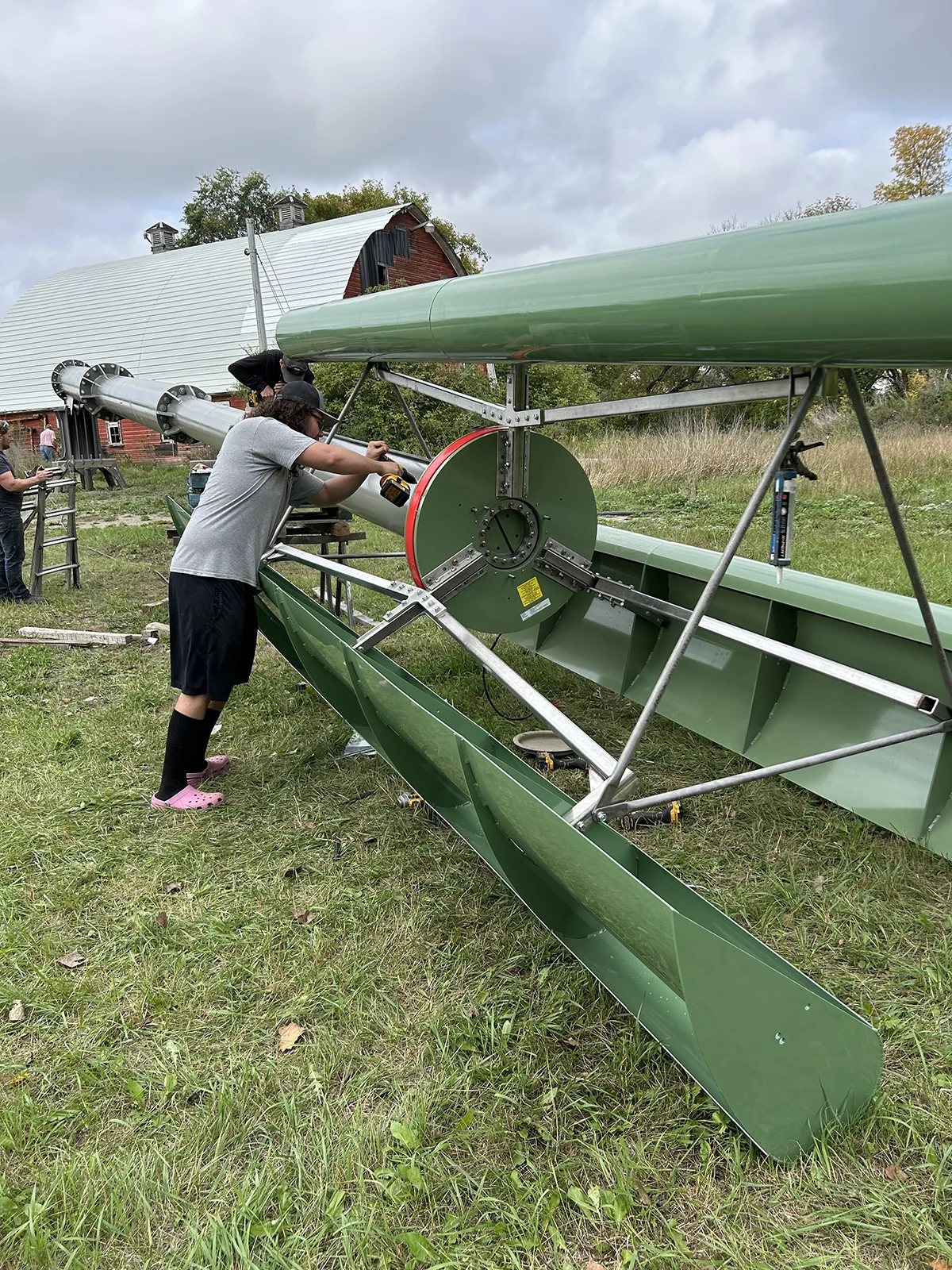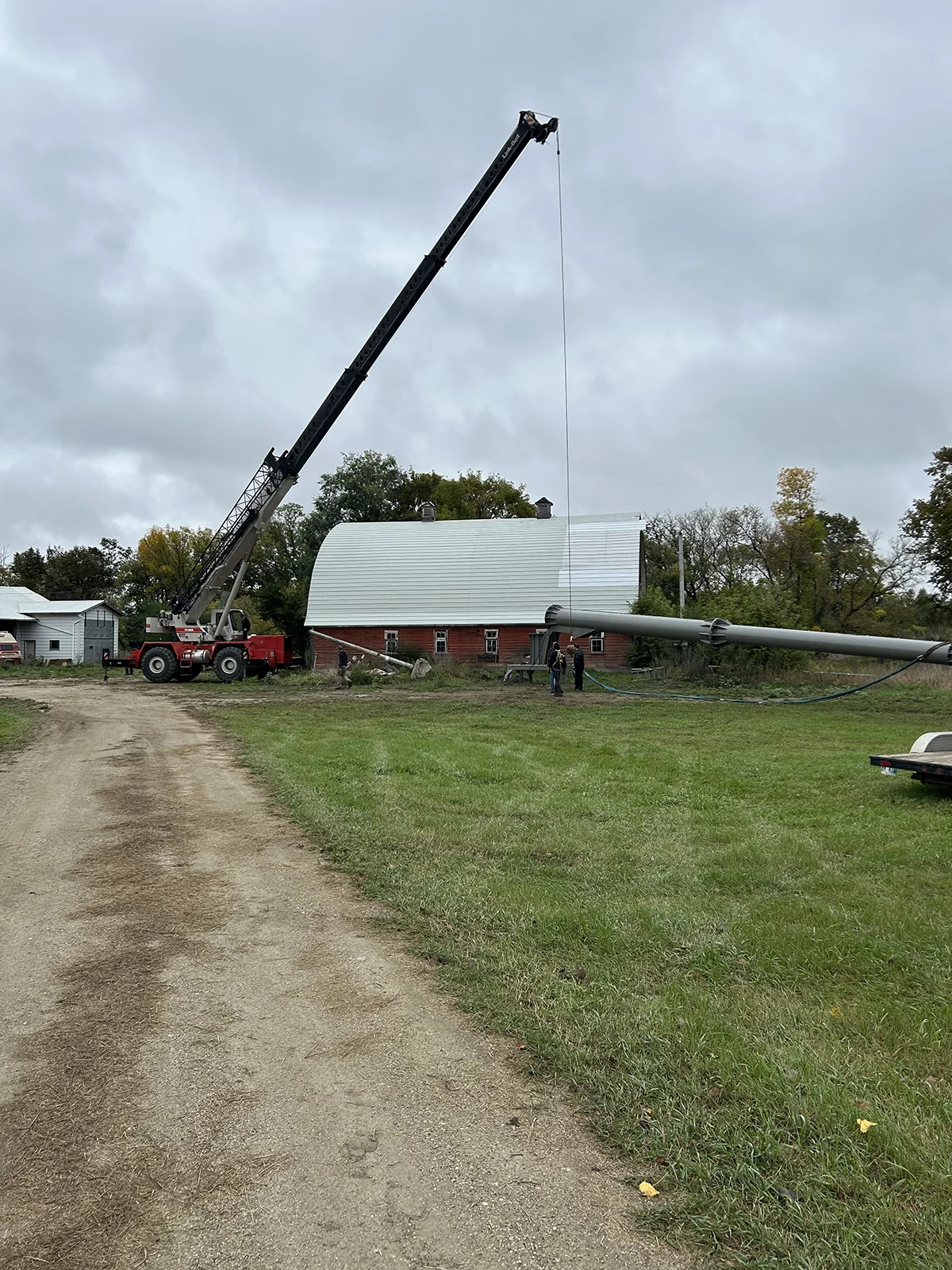
Most facility leaders accept wind turbines. They reject the disruption that comes with installing them. When a project appears to involve weeks of heavy civil work, crane days, and blocked parking, the idea often dies in the meeting room. The challenge has never been whether wind works. It is whether the process of putting it up fits the rhythm of a school, a retail lot, or a public yard.
Mundo-Power’s fixed 6.25 kW vertical-axis wind turbine was built to answer that question. The installation happens in six contained steps. No long pauses for curing concrete. No multi-day crane plans. No risky lifts at height. A short, predictable sequence that brings the first power without turning a site upside down.
Why do Installs so Often Stall
Community and commercial sites have been pursuing wind energy for decades. The performance is proven. The pain comes before every turn of the blades. Large concrete foundations mean weeks of idle time. Tower and rotor lifts require large cranes, certified crews, and favorable weather conditions. Each added stage introduces a place for the schedule to slip, a chance for neighbors to complain, or a new bill to pay.
Managers know the feeling. Your calendar is already packed, and now you are being asked to plan around three weeks of construction, hoping the weather cooperates. That reality has slowed the adoption of small and mid-scale wind.
What if the first day looked different?
Imagine crews arriving not with excavation gear but with survey paint and a small piling rig. Utility locates are completed, marks are placed on the ground, and you are ready to set steel the same week. There are no long permit delays associated with tower height or noise, as the unit is modest in scale and designed to be quiet. The start feels less like a construction site and more like routine site prep.
No concrete, no waiting
The foundation is where most projects lose weeks. Traditional turbines require a reinforced concrete pad that must be placed and allowed to cure before use. Mundo-Power’s turbine skips that. A steel screw pile is driven into the ground and is immediately ready to carry a load. By the end of the day, the foundation is complete—no rebar, no trucks, no downtime.
Steel is ready in hours.
Once the pile is set, a pre-fabricated base plate bolts on. Level it, torque it, and the site is ready for the tower. Compare that to aligning anchor bolts in a cured foundation and hoping nothing shifted. With Mundo’s design, there are no surprises and no rework.
Keep the tower on the ground.
This is where most installs diverge. A horizontal turbine requires cranes to stand tower sections vertically, with each lift subject to wind conditions. One gust, and the crew is back tomorrow. Mundo’s tilt-up tower avoids that. Sections are bolted together on the ground, safely and quickly. The hinge at the base does the heavy lift.
Build the turbine in a location where you can easily access it.

Bolting blades onto a hub at 80 feet is slow, expensive, and risky. Mundo’s vertical-axis wind turbine for sale is assembled at ground level. Blades, hub, and generator connections are made within arm’s reach. There is no yaw motor to align, and no gearbox perched on top of a mast. The design has fewer moving parts and a simpler fit-up, which shortens the path to commissioning. The 6.25 kW rotor operates at low RPM with a tested sound level of 65 dB at 4.5 m, which suits campuses and retail lots that require low noise levels.
Up and running in one motion
With everything built at ground level, the final rise is a single clean step. A hydraulic ram or winch tilts the tower into place, locks it, and the turbine is standing. Cables are landed, checks are run, and the system is live. For many sites, that means first power the same day the tower goes up.

Which sequence fits your site - Portable Power Trailer and/or Vertical Axis Wind Turbine?
Think about your options side by side:
- A screw pile foundation installed in a day, or weeks waiting on concrete.
- A tower bolted together at grade, or multiple crane lifts at height.
- A quiet vertical axis rotor assembled within arm’s reach, or blades swung by crane in
tight weather windows.
- A tilt-up raises in hours, or a rolling crane plan that ties up your site.
Both approaches result in a turbine that generates power. Only one fits the realities of schools, retail lots, and municipal yards.
How an EV charging trailer fits now or alongside a permanent turbine
Some sites need charging capacity before utility upgrades are ready. Others want to prove demand without pouring concrete. A portable EV charging trailer solves both and pairs cleanly with the six-step installation.
Deploy a road-legal 53 ft trailer with dual 6.25 kW turbines, a 10 kW solar array, and up to 200 kWh onboard storage. Run Level 2 ports or a single DC fast charger while utility work or internal approvals play catch-up. It sets in hours, avoids trenching and transformer upgrades, and can be relocated if traffic patterns change.
Side by side with your permanent turbine. Keep the trailer on site through the first year to handle peak charging and events while the fixed turbine delivers steady generation. The trailer’s hybrid wind-solar curve and battery storage smooth daily variability and reduce grid draw. Specs support multiple Level 2 or up to 150 kW DC fast charging, with revenue-grade metering and payment kiosk options for public sites.
Why it works operationally
- No permits and minimal site change. Portable and non-permanent deployment avoids long civil work and keeps lots open.
- Right size, then right site. If demand underperforms, relocate the unit across your network and keep the asset earning.
- Matched components. The trailer utilizes the same 6.25 kW VAWTs and low noise profile as the fixed system, simplifying service and community approvals.
- Clear numbers to plan with. The trailer generation pairs two 6.25 kW turbines with approximately 10 kW of PV and ample storage for continuous operation in retail and campus settings.

What does this Means for You and Your Power?
If you manage a campus, a shopping center, or a public facility, the numbers matter. The issues with the calendar are more. A six-step installation that takes hours, operates quietly around people, and requires service only every few years is the path that makes sense. If charging is part of the brief, start now with an EV charging trailer and keep it on site as your permanent turbine comes online. You gain speed, flexibility, and a clean handoff to a long-lived asset.
Six Steps to a Simpler Project
The answer is not abstract, and with our vertical axis wind turbine for sale the solution is clear. There are six specific steps: locate, screw pile, base plate, tower base, turbine assembly at grade, and tilt-up raise. That process gets you to first power without the construction saga.
If your targets are simple — predictable install, quiet operation, long service life — then the path is simple too. Define your limits and ask Mundo-Power for a scoped, six-step plan that aligns with them.
